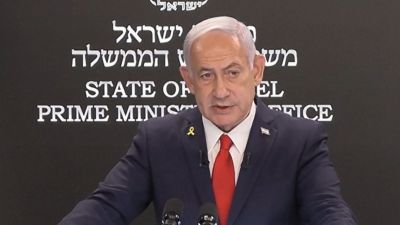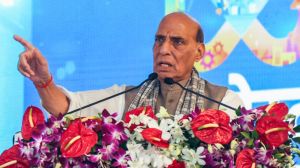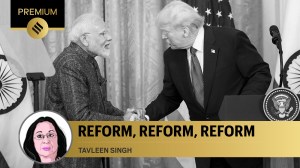Water-Sharing row: In 10 years, Punjab never utilised its full quota, Haryana overdrew 8 times, Rajasthan every year
Punjab Haryana Water Row: A functionary of the government, said that free power to tubewells has led to a plethora of problems for the state.
 Chief Minister Bhagwant Mann said it was due to state government’s efforts in supplying canal water till the tail end for agricultural fields.
(File Photo)
Chief Minister Bhagwant Mann said it was due to state government’s efforts in supplying canal water till the tail end for agricultural fields.
(File Photo)Punjab Haryana Water Row: Successive governments in Punjab have always taken a stand, at least in public rhetoric, that they would not allow a single drop of extra water to be shared with other states.
The reality, however, paints a different picture, as analysis of data on water sharing during the past decade revealed that Punjab never utilised its full quota.
In sharp contrast, neighbouring states of Haryana and Rajasthan have regularly drawn more than 100 per cent of their respective allocations, effectively exceeding the limits set by inter-state water agreements.
A perusal of data on water utilisation by the three partner states during the past decade, available with the Water Resources Department of the state, revealed that Punjab’s usage was 64 to 91 per cent between 2014-15 and the current year.
On the other hand Haryana’ utilisation has been 89 per cent to 110 per cent during this decade. Rajasthan’s utilisation has been from 101 to 130 per cent.
Punjab was ruled by Shiromani Akali Dal-Bharatiya Janata Party (BJP) combine in 2015-16 and 2016-17.
In March 2017, Congress led by former Chief Minister Capt Amarinder Singh had taken over the reins of the state.
The Aam Aadmi Party (AAP) led by Chief Minister Bhagwant Mann is ruling the state since March 2022.
In 2014-14, Punjab utilised 4.642 MAF from its allotted share of 6.621 MAF (70 per cent).
The same year, Haryana utilised 104 per cent of its share (3.488 MAF against allotted share of 3.365 MAF).
Rajasthan utilised 113 per cent of water, amounting to 4.695 MAF out of its share of 4.157 MAF.
In the following years, Punjab’s utilisation (in percentage) was 76, 87, 84, 64, 69, 83, 76, 69, respectively till 2022-23, the first year of AAP’s rule in the state.
In 2023-24, the utilisation went up to 84 per cent and current year till date it is 91 per cent.
Chief Minister Bhagwant Mann said it was due to state government’s efforts in supplying canal water till the tail end for agricultural fields.
On the other hand, Haryana’s utilisation from 2015-16 to 2024-25 has been 102,110, 102, 89, 99, 109, 110, 106, 112, and 104 per cent.
Similarly, Rajasthan’s utilisation for these years has been 125, 117, 116, 114, 130,101, 110,107,122, and 110 per cent.
All this while Punjab, often saw politics heating up over the issue of sharing water.
Amarinder Singh brought the termination of agreements law in 2004, while then chief minister Parkash Singh Badal, in November 2016, brought another law denotifying the land meant for construction of the Sutlej Yamuna Link canal and returned it to its original owners.
Now, the AAP dispensation is harping on the issue, considered close to the hearts of people of Punjab — the state that helped the country usher in green revolution.
It is often frowned upon that Punjab has overexploited its precious underground water to grow rice to fill the granaries of the nation.
A functionary of the government, said that free power to tubewells has led to a plethora of problems for the state.
It not only bled the state exchequer dry but also discouraged the farmers from utilising readily available canal water.
“The farmers liked the idea of just switching on the tubewells instead of seeking their turn to get canal water at odd hours. The political heads of the state did not react. Nobody cared to look at our usage. We just raised the river water in politics. Never on the ground. The Vidhan Sabha has passed nine resolutions till May 5 stating that Punjab will not share a drop extra. The ground reality is that it has been sharing extra water with both the neighbours for many years,” said an official.
Cabinet minister Harjot Bains had recently told the Vidhan Sabha that Congress made two mistakes.
They allowed water to be shared. Secondly, they did not work towards making optimum use of canal water for agriculture.
“Canal water was being used for only 23 per cent of irrigation before we took over. The coverage now is 60 per cent. It is only going to increase,” he had stated.
Mann had, however, been ruing that farmers are still preferring tube-well water over canal water.
He had stated recently that he would order disconnection of power supply to the tubewells in the area being fed by canal network.
“I will not supply power to such tubewells during the day. Only then we will be able to save underground water,” he had stated.
There have been cries about Punjab facing desertification with 117 out of its 153 blocks falling in dark zone.
Yet, the canal water supply was ignored.
Former Water Resources Minister in Congress government, Sukhbinder Singh Sarkaria said, “We have been sharing extra water with Haryana and Rajasthan because we could not utilise our entire share. During the depletion period of dam, from April to May, we had been sharing extra water with these two states. This is because our area under cotton had decreased and the cotton belt was not consuming this water. This is why it was sent to these states that have been seeking extra water for drinking during these two months. Also, technically, the level in dams is to be lowered to ready them for filling period in upcoming monsoon”.












